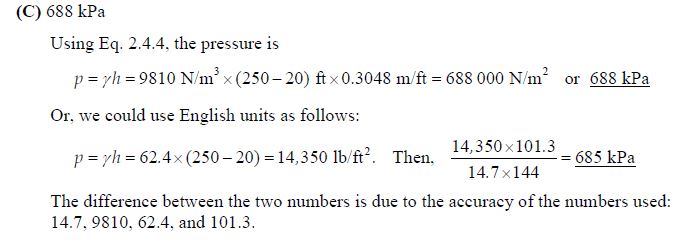A water-well driller measures the water level in a well to be 20 ft below the surface. The point on the well is 250 ft below the surface. The pressure at the point, in SI units, is estimated to be:
(A) 632 kPa
(B) 652 kPa
(C) 688 kPa
(D) 698 kPa

You might also like to view...
The planet Neptune is blue in color. How would you expect the spectrum of visible light from Neptune to be different from the visible-light spectrum of the Sun?
A) The two spectra would have similar shapes, except Neptune's spectrum would be missing a big chunk of the red light that is present in the Sun's spectrum. B) The two spectra would have similar shapes, except Neptune's spectrum would be missing a big chunk of the blue light that is present in the Sun's spectrum. C) Neptune's spectrum would peak at a much longer wavelength than the Sun's spectrum. D) There is no way to predict the answer to this question because planets and stars are made of such different things.
Monochromatic light from a He-Ne laser (? = 632.8 nm) is incident on a diffraction grating containing 5000 lines/cm. Determine the angle of the first-order maximum.
A. 18.4° B. 39.2° C. 14.6° D. 27.7° E. 13.9°
With what objects do many of the millisecond pulsars appear to be associated, and what does this tell us about their age?
What will be an ideal response?
The fact that the Earth has moved along its orbit in the time it took to rotate once is the reason for
A) the position of the Celestial Equator. B) precession. C) the difference between solar and sidereal time. D) Earth's 23.5-degree tilt. E) seasons.